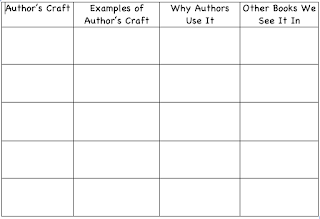There are all kinds of buzz words in education, aren’t
there? I mean, you hear about differentiation, rigorous learning, best
practice, anchor charts, balanced literacy, mentor texts, collaborative learning, models, word walls, and
so much more. Sometimes it can be
difficult to keep up with what exactly it all means. Let’s dig a little deeper into mentor texts and how they can be used
to truly enhance reading and writing
in your classroom.
I cannot tell you how many teachers, from various grade
levels, have told me that they don’t feel like they are good writing teachers
because they don’t feel like they are good writers themselves. I get it!
Not everyone enjoys curling up with a journal and getting lost in
thought for hours on end. But that does
not mean you are not a good writer, nor does it mean that you are not a good
writing teacher! There are amazing
writers out there who have already done the work of creating GREAT examples of
writing and various writing skills for you!
Hallelujah!
So…what exactly IS a
mentor text? And why should we use it to
support writing in the classroom?
Mentor texts are written pieces that serve as powerful
examples of good writing for your students.
Teachers select texts, read them to the students or have the students
read them, and then use the texts to study and reinforce a specific skill the
author achieved. You are the one who selects the text, based on
the reading/writing skills that you need to teach during your Reader’s and Writer’s
Workshop mini-lessons.
Now, before you go
and just grab a book off of the shelf, there are a few things to consider:
LOVE IT- you have to love it! If you don't love it, lose it! This also needs to be a text that you can see yourself returning to over and over again for a variety of reasons.
Now, let’s think
about how Mentor Texts fit into our classroom instruction:
Before using a mentor text for a specific look at Author’s
Craft, make sure your students are familiar with the skill (craft) that you are
trying to point out in this chosen text. For example, your students will
struggle to understand how the author’s use of sensory details
helps them to visualize the setting if they are not familiar with what
sensory details actually are. So, it
needs to be defined and discussed before leading students into the text. We
typically will do this work in our Reader’s Workshop in Shared Reading
opportunities.
So, where do you even START to look for quality texts that
could serve as mentor texts??
SURPRISE!
Also included in this post is a form that could be used as an anchor chart and a potential record of mentor text work for students in their Reader's Notebooks!
It may look like this in your classroom...
Happy reading AND
happy writing!





